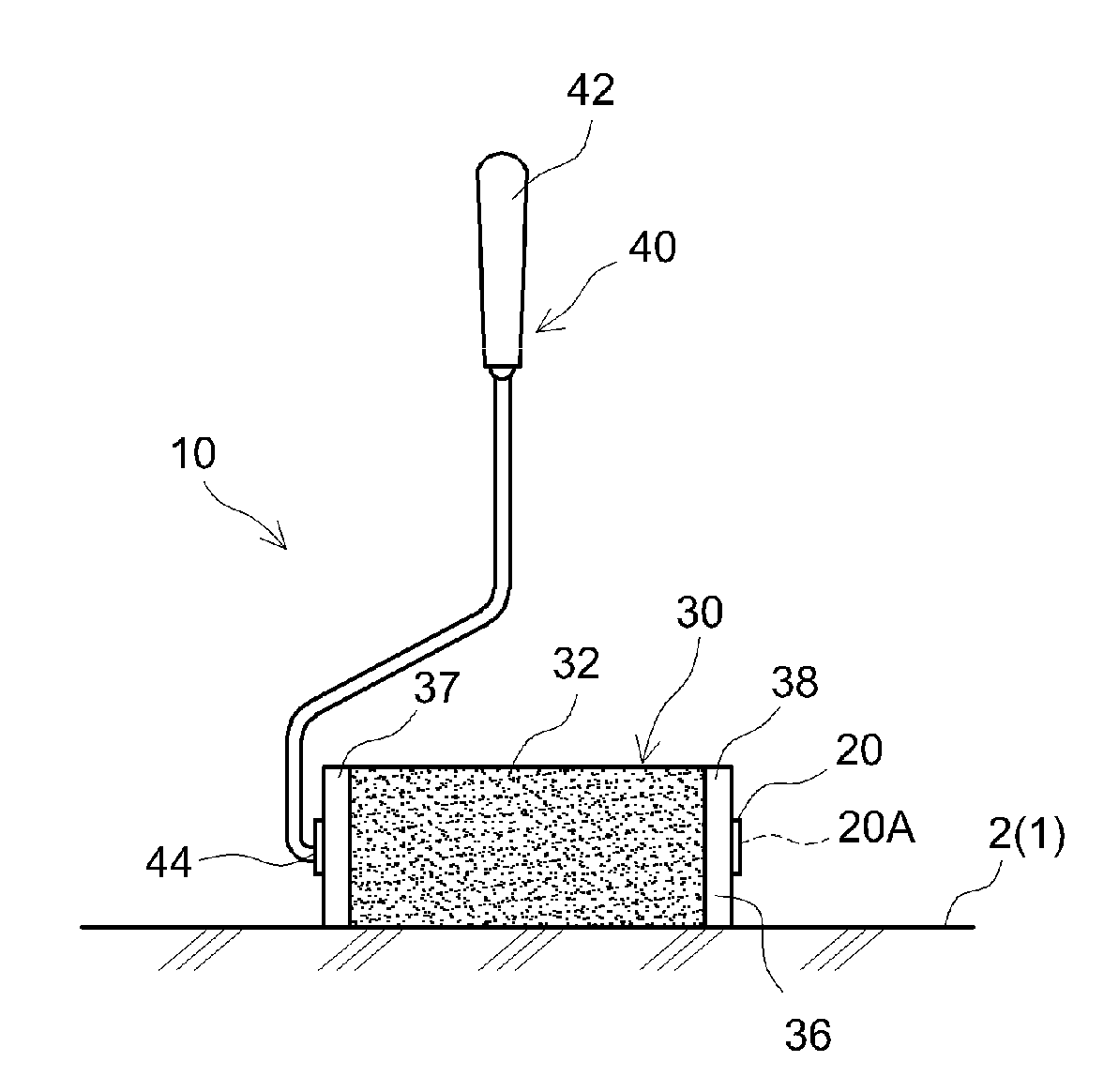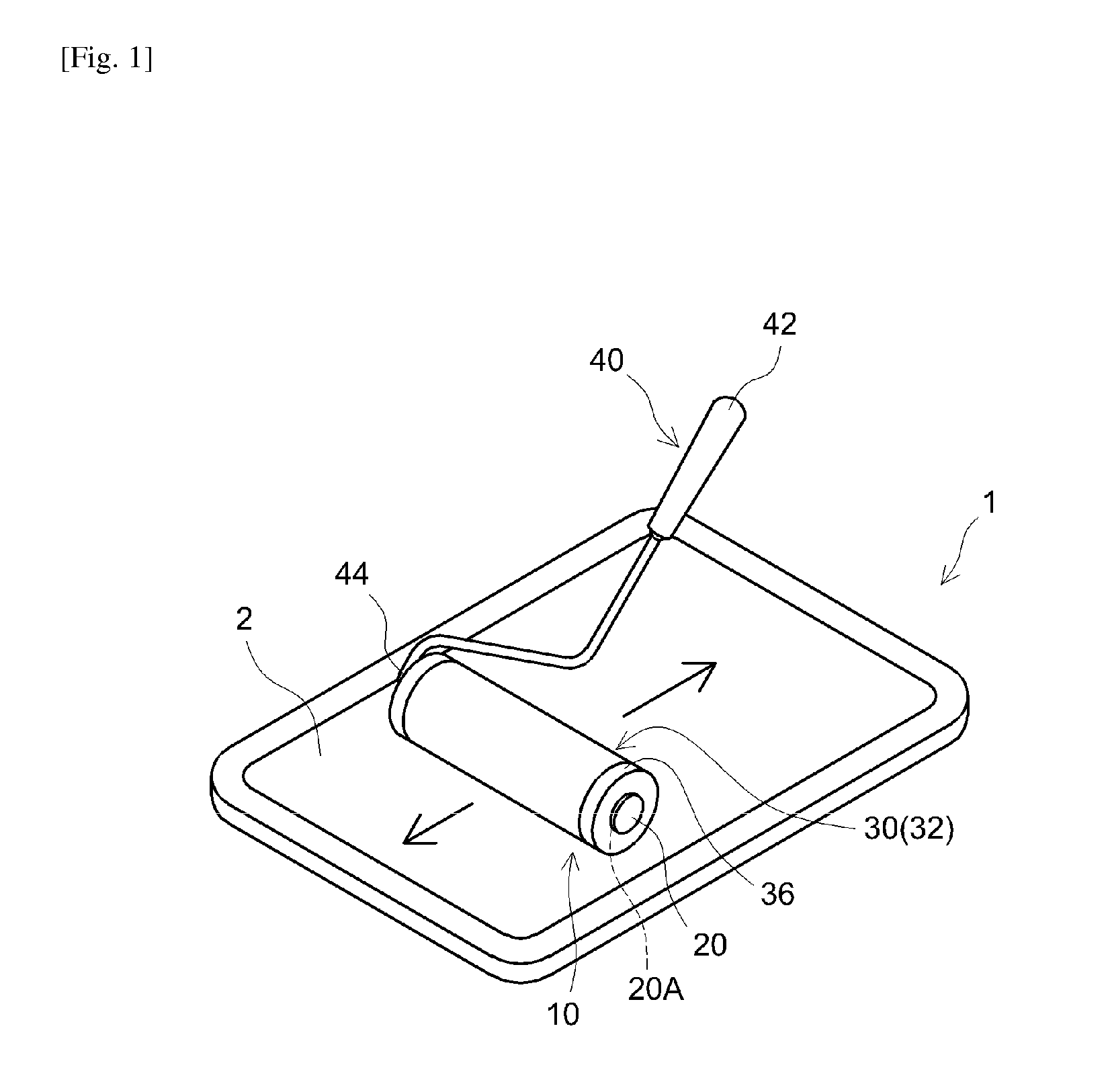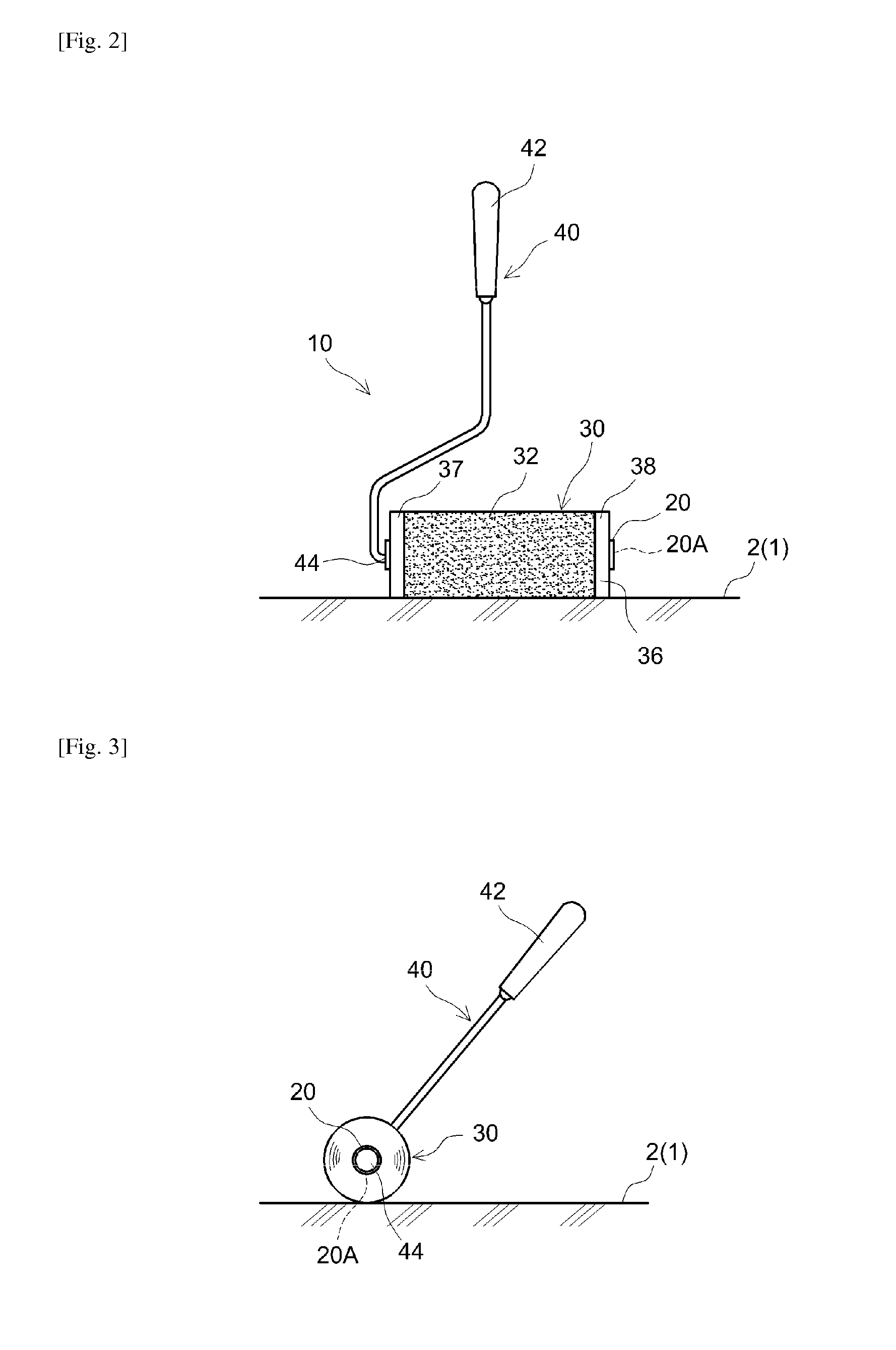Pressure-sensitive adhesive cleaner for plate surfaces
a technology of adhesive cleaner and plate surface, which is applied in the direction of cleaning process and equipment, house cleaners, chemistry apparatus and processes, etc., can solve the problems of difficult touch panel operation, accumulation of oily dirt, and easy accumulation of dust and dir
- Summary
- Abstract
- Description
- Claims
- Application Information
AI Technical Summary
Benefits of technology
Problems solved by technology
Method used
Image
Examples
example 1
[0099]As for a PSA, to a three-necked flask, were placed 2-ethylhexyl acrylate (2-EHA) and acrylic acid (AA) at a mass ratio of 2-EHA:AA=95:5 (with toluene used as a solvent), and was added benzoyl peroxide as a polymerization initiator under a nitrogen flow. The reaction mixture was heated to 60° C., and the reaction was carried out for two hours. The reaction mixture was further heated to 80° C., and the reaction was carried out for one hour to prepare a solution of an acrylic polymer having a weight average molecular weight (MW) of about 50×104 to 60×104. After this, relative to 100 parts by mass of the solid polymer content in the acrylic polymer solution, were mixed 5 parts by mass of a tackifier (terpene-phenol resin: “TAMANOL (registered trademark) 803L”, a product of Arakawa Chemical Industries, Ltd.), 30 parts by mass of a plasticizer (diisononyl adipate: “MONOCIZER (registered trademark) W-242”, a product of DIC Corporation) and 0.2 part by mass of a crosslinking agent (an...
example 2
[0102]Using a PSA body (38 μm thick PET substrate+about 80 μm thick PSA layer) formed via the same procedures except that a commercially available solvent-based acrylic PSA (PSA whose main monomer component is 2-EHA: a product of Nitoms Inc.) of the same type was used in place of the acrylic PSA used in Example 1, were formed a total of four different PSA sheet rolls using supports of varied diameters (4 mm, 20 mm, 35 mm, 50 mm). In the same manner as Example 1, by rollably (rotatably) setting the respective PSA sheet rolls on head spindles 44 of handle members 40, cleaners according to Example 2 were constructed.
example 3
[0103]Using a PSA body (38 μm thick PET substrate+about 80 μm thick PSA layer) formed via the same procedures except that a commercially available solvent-based natural-rubber-based PSA (rubber-based PSA containing as a main rubber component a natural rubber having a weight average molecular weight of 10×104 to 100×104: a product of Nitoms Inc.) was used in place of the acrylic PSA used in Example 1, were formed a total of four different PSA sheet rolls having supports of varied diameters (4 mm, 20 mm, 35 mm, 50 mm). In the same manner as Example 1, by rollably (rotatably) setting the respective PSA sheet rolls on head spindles 44 of handle members 40, cleaners according to Example 3 were constructed.
PUM
 Login to View More
Login to View More Abstract
Description
Claims
Application Information
 Login to View More
Login to View More - R&D
- Intellectual Property
- Life Sciences
- Materials
- Tech Scout
- Unparalleled Data Quality
- Higher Quality Content
- 60% Fewer Hallucinations
Browse by: Latest US Patents, China's latest patents, Technical Efficacy Thesaurus, Application Domain, Technology Topic, Popular Technical Reports.
© 2025 PatSnap. All rights reserved.Legal|Privacy policy|Modern Slavery Act Transparency Statement|Sitemap|About US| Contact US: help@patsnap.com



